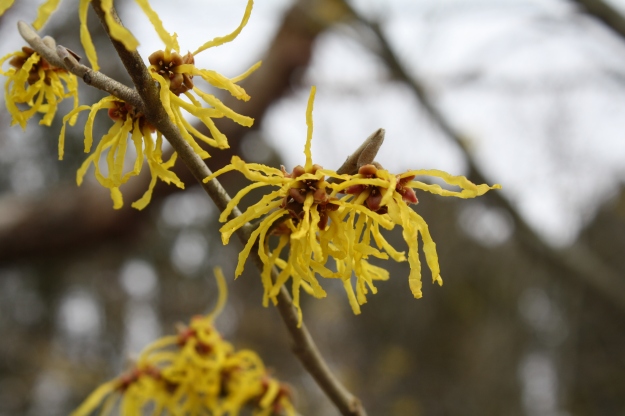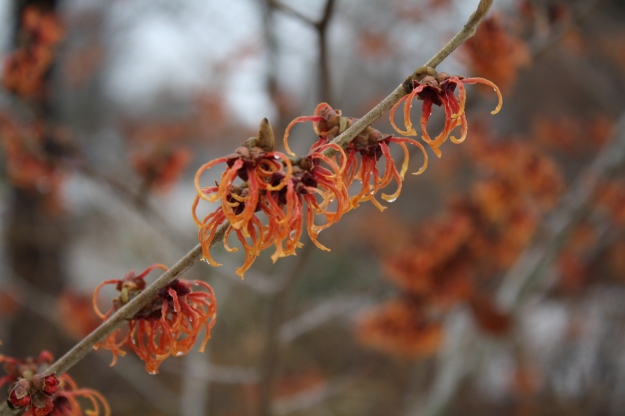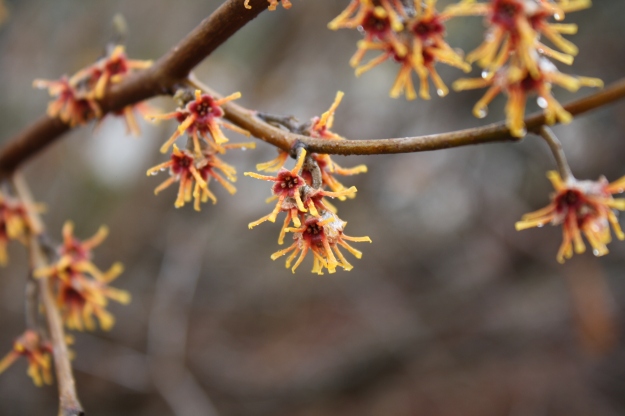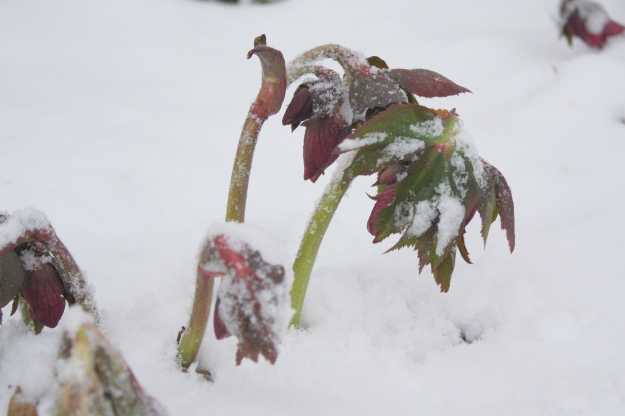It’s noon, and it’s 12 degrees, but it’s sunny with no wind… so I went out to the garden to look for signs of spring….crazy, I know. I stepped in a snowbank over my knees but then was able to walk on top of the two or so feet of frozen snow on the ground. I wanted to look at the ‘Arnold Promise’ witch hazel over by the gazebo. It has skinny little yellow flowers with a light fragrance, and like all the witch hazels, blooms very early. Today I saw just the tiniest bit of yellow peeking out from between the scales of the flower buds. That’s a good sign! From the sidewalk on Upper College Road I looked closely at the ‘Jelena’ witch hazel , another very early bloomer. It is at the same stage as ‘Arnold Promise’, with about a millimeter of orange petal showing. Our third witch hazel is the native Ozark witch hazel, with slightly smaller flowers but much more fragrance. I did not see any sign that it is waking from it’s long winter’s nap just yet.
Hamamelis , the genus of witch hazels, are hardy, low maintenance plants with few pest problems. Whether you think of them as small trees or large shrubs, they are a manageable size at 10 to 15 feet, with some spreading forms nearly as wide. They have smooth, rather plain brown-to-gray bark and heavily textured oval leaves, which turn mostly yellow in fall. And then there’s the reason we love them: spidery, strappy little flowers with long, crinkly petals, all along the branches, when almost nothing else is blooming.
Hamamelis virginiana, native to eastern North America, blooms around November, and is the plant used for the witch hazel extract you can buy at your local drugstore.
Hamamelis vernalis is native to stream banks of the south-central US. It is the earliest shrub to flower in spring, and its small, yellow-red blooms open from late February to early April, depending on the weather. It can form dense, multi-stemmed colonies by sending out suckers. The medium green leaves turn golden yellow in fall. Our Ozark witch hazel is H. vernalis, and when it blooms it smells like springtime!
Hamamelis x intermedia are vigorous hybrid witch hazels, crosses of the Japanese and Chinese species. Blooming from late February to March, their yellow-red petals unfurl on warm days but curl up tightly during chilly nights. The fall foliage is an attractive yellow-orange. Our ‘Arnold Promise’ and ‘Jelena’ are both H. x intermedia. They are sure signs that spring is on it’s way. Take a walk through the Botanical Gardens in the next few weeks (wear your boots) and you’ll find the earliest flowers on the witch hazel, a treat for the winter-weary and anyone ready longer, warmer days.













































